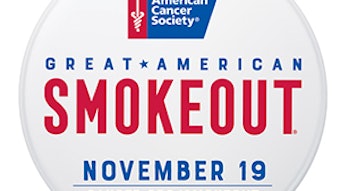Vaping’s Harmful Effects on Our Patients
Vaping, the use of e-cigarettes or other electronic nicotine delivery systems (ENDS), has increased in recent years as compared with traditional cigarettes. There are multiple harmful effects of vaping, and for adolescents in particular, there are special concerns for harm. Despite recent regulations by the U.S. Food and Drug Administration (FDA), loopholes still exist that allow for sale of flavored ENDS devices to youth.
Ofer Jacobowitz, MD, PhD


ENDS are battery-fueled devices that heat and vaporize liquid chemicals for inhalation. They are not combustion devices like regular cigarettes, but explosions and burn injuries have occurred because of the lithium batteries that power the heating element of ENDS. The risk is greater due to the cylindrical enclosure, improper charging in USB ports, and expanding gas within the case. Major facial burns, fractures, and loss of vision have also occurred.
Since the nicotine chambers and refill containers have a high concentration of nicotine, poisonings have occurred in children. Youth especially find the devices—often dressed in colorful, attractive packaging—alluring. Nicotine poisoning in children can result in coma, seizures, cardiorespiratory arrest, and even death.
The solvents in ENDS, propylene glycol and vegetable glycerin, chemically react with flavoring aldehydes such as those with vanilla and fruit flavors and produce noxious aldehyde acetals. These products have been shown to induce death of cultured bronchial epithelial cells, suppress mitochondrial function, and activate sensory irritant receptors. As of February 2020, lung injury (EVALI) associated with severe e-cigarette or vaping product use resulted in 2,807 hospitalizations or deaths, possibly related to some additives in the products.
The “e-liquids” in ENDS, even in absence of nicotine, have been shown to be toxic to human middle ear epithelial cell lines. Use of e-cigarettes in humans has been shown to activate inflammatory pathways and to suppress immune-related gene expression of cytokine signaling pathways, even to a greater degree than with regular cigarette smoking. E-cigarette use increases the risk of asthma attacks in youth.
Vaping may increase the risk of myocardial infarction and acutely increase blood pressure, arterial stiffness, and endothelial dysfunction in observational studies.
E-cigarette smoke may cause cancer. In mice, it induced lung adenocarcinoma and bladder urothelial hyperplasia. E-cigarette exposure in mice resulted in decreased renal filtration and increased renal fibrosis.
The use of e-cigarettes in the past 30 days was associated with a five-fold higher risk of COVID-19 infection in a survey of adolescents and young adults. Possible mechanisms may include respiratory toxicity or frequent hand-face touching in users.
Use of e-cigarettes during pregnancy can have multiple adverse effects on the fetus, and the harm may occur prior to recognition of pregnancy by the mother. Smoking of all types increases the risk of congenital heart defects. Nicotine exposure in utero can increase the risk of childhood and adult hypertension, impair neuronal circuitry development, and is associated with preterm births and still births.
Nicotine in e-cigarettes may affect the maturing brains of adolescents, leading to disorders of emotional regulation and impulsivity. Nicotine is an addictive drug and may prime the young for addiction to other, “harder” drugs.
Menthol and fruity flavors and odorants are particularly appealing to youth and thus likely play a larger role in the vaping epidemic. In 2020 there are an estimated 3.6 million middle and high schoolers who use e-cigarettes, and eight out of 10 use flavored products. The rate has decreased from that reported in 2019, but it is still of epidemic magnitude.
Unfortunately the regulation of ENDS has not kept pace with the products. In 2016 the FDA finalized a rule to regulate the manufacture, import, packaging, labeling, advertising, promotion, sale, and distribution of ENDS. The rule also restricted the sale to those of 18 years or older. However the appeal of flavored products fueled the increased adoption and use of ENDS by youth. In January 2019 the FDA withdrew fruit-, mint -, and dessert-flavored cartridges from the market, but menthol cartridges were not included in the ban. Despite the ban, there were loopholes for open tank systems that could be filled with flavored nicotine and several companies sold disposable flavored ENDS, leading to an increase from 2.4% to 26.5% in use of these ENDS by high school students from 2019 to 2020. In June 2020 a lawsuit was filed on behalf of the African American Tobacco Control Leadership Council (AATCLC) and Action on Smoking and Health (ASH) to compel the FDA to ban menthol flavored cigarettes.
The problem remains. Let us listen to our patients and educate them about the harmful effects of vaping. E-cigarettes are like alcohol or other drugs, in a much more attractive package.
The following resources are available:
- https://e-cigarettes.surgeongeneral.gov/knowtherisks.html
- https://e-cigarettes.surgeongeneral.gov/documents/SGR_ECig_ParentTipSheet_508.pdf
- https://www.cdc.gov/tobacco/basic_information/e-cigarettes/index.htm
- https://www.cdc.gov/mmwr/volumes/69/wr/mm6937e1.htm
- https://www.cdc.gov/mmwr/volumes/69/wr/mm6937e2.htm
References
Bayly JE, Bernat D, Porter L, et al. Secondhand exposure to aerosols from electronic nicotine delivery systemsand asthma exacerbations among youth with asthma. Chest. 2019;155: 88–93.
Centers for Disease Control and Prevention. Outbreak of lung injury associated with the use of e-cigarette, or vaping, products. Accessed September 2020. https://www.cdc.gov/tobacco/basic_information/e-cigarettes/severe-lung-disease.html#latestoutbreak-information
England LJ, Bunnell RE, Pechacek TF, et al. Nicotine and the developing human: a neglected element in the electronic cigarette debate. Am J Prev Med. 2015;49:286–923.
ERS International Congress. From tobacco and vaping health effects to tobacco cessation. August 24, 2020. https://ers-program.key4events.com/prod/v2/Front/Program/Session?e=259&session=12386
Gaiha SM, Ch¬eng J, Halpern-Felsher B. Association between youth smoking, electronic cigarette use, and coronavirus disease 2019 . J Adolesc Health. Published online August 11, 2020. doi:10.1016/j.jadohealth.2020.07.002
Holbrook BD. The effects of nicotine on human fetal development. Birth Defects Res C Embryo Today. 2016;108:181–192.
Martin EM, Clapp PW, Rebuli ME, et al. e-Cigarette use results in suppression of immune and inflammatory-response genes in nasal epithelial cells similar to cigarette smoke. Am J Physiol Lung Cell Mol Physiol. 2016;311(1):L135-L144. doi:10.1152/ajplung.00170.2016
Kavousi M, Pisinger C, Barthelemy J-C, et al. Electronic cigarettes and health with special focus on cardiovascular effects: position paper of the European Association of Preventive Cardiology (EAPC). Eur J Prev Cardiol. 2020;204748732094199 doi: 10.1177/2047487320941993
Song JJ, Go YY, Mun JY, et al. Effect of electronic cigarettes on human middle ear. Int J Pediatr Otorhinolaryngol. 2018;109:67-71. doi:10.1016/j.ijporl.2018.03.028
U.S. Food and Drug Administration. Youth tobacco use: results from the National Youth Tobacco Survey. Accessed September 2020. https://www.fda.gov/tobacco-products/youth-and-tobacco/youth-tobacco-use-results-national-youth-tobacco-survey
Wang TW, Neff LJ, Park-Lee E, Ren C, Cullen KA, King BA. e-Cigarette use among middle and high school students — United States, 2020. MMWR Morb Mortal Wkly Rep. Published online September 9, 2020. doi:10.15585/mmwr.mm6937e1
Zhao L, Chen L, Yang T, et al. Parental smoking and the risk of congenital heart defects in offspring: an updated meta-analysis of observational studies. Eur J Prev Cardiol. Published online March 23, 2019. doi:10.1177/2047487319831367.













